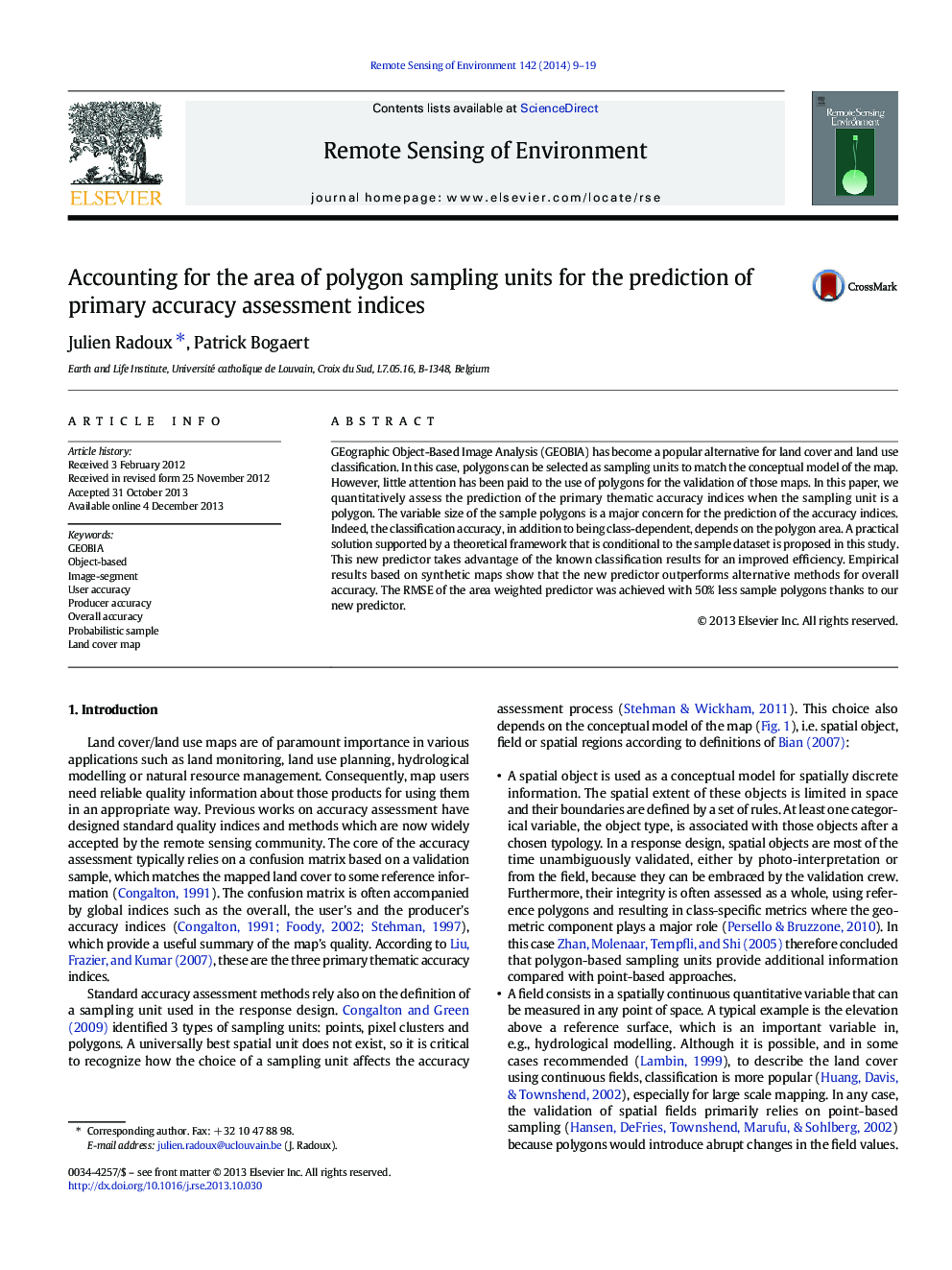| Article ID | Journal | Published Year | Pages | File Type |
|---|---|---|---|---|
| 6346923 | Remote Sensing of Environment | 2014 | 11 Pages |
Abstract
GEographic Object-Based Image Analysis (GEOBIA) has become a popular alternative for land cover and land use classification. In this case, polygons can be selected as sampling units to match the conceptual model of the map. However, little attention has been paid to the use of polygons for the validation of those maps. In this paper, we quantitatively assess the prediction of the primary thematic accuracy indices when the sampling unit is a polygon. The variable size of the sample polygons is a major concern for the prediction of the accuracy indices. Indeed, the classification accuracy, in addition to being class-dependent, depends on the polygon area. A practical solution supported by a theoretical framework that is conditional to the sample dataset is proposed in this study. This new predictor takes advantage of the known classification results for an improved efficiency. Empirical results based on synthetic maps show that the new predictor outperforms alternative methods for overall accuracy. The RMSE of the area weighted predictor was achieved with 50% less sample polygons thanks to our new predictor.
Keywords
Related Topics
Physical Sciences and Engineering
Earth and Planetary Sciences
Computers in Earth Sciences
Authors
Julien Radoux, Patrick Bogaert,
